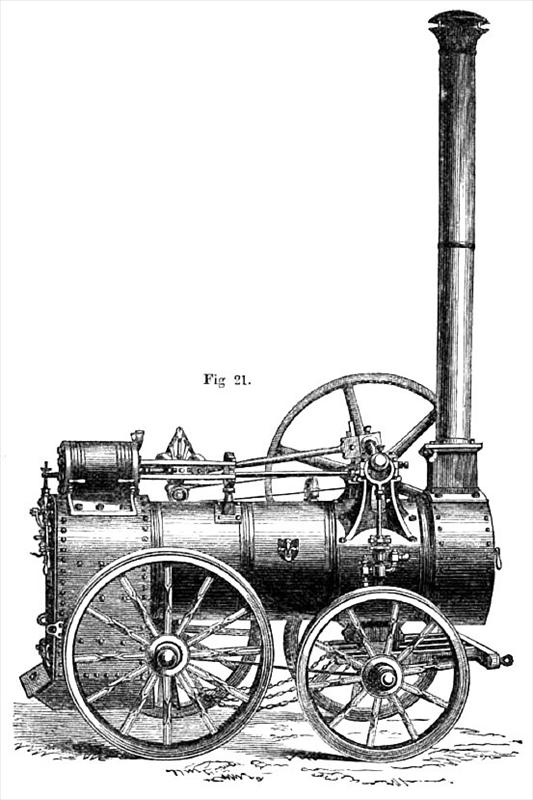|
Title: |
1863 Article-Ruston, Proctor & Co., Portable Steam Engine |
|
Source: |
The Practical Mechanic's Journal, 01 Mar 1863, pgs 313-314 |
|
Insert Date: |
4/5/2012 10:11:59 AM |
|
In fig. 21 is given a side elevation of an 8 horse-power single cylinder portable engine, by Messrs. Ruston & Proctor, of Lincoln; and in fig. 22 is given a similar view of a 10 horse-power double cylinder engine of the same makers. This firm is well-known for strong and simple constructions. Their first portable engine was made in 1845; the boiler was made with parted flues and return tubes; the piston rod was guided at its outer end beyond the cross-head, and motion transmitted to the crank shaft by means of a long forked connecting rod. The feed pump was fixed to the side of the cylinder, and worked directly from the cross-head. After this, some engines were made with a countershaft, with spur wheel and pinion to increase the speed. The old plan, however, with the exception of the boiler, which was made direct multi tubular, was returned to, and continued to the year 1H55, when several improvements were made, which brought the engine up to the present standard of the best portable engines. The boiler and cylinder were both increased in size; and wrought iron double square guide bars were substituted for the old plan. The pump was made to be worked by an eccentric directly under the crank shaft, which latter had the crank inside the bearings; the slide eccentric was, by a simple contrivance, fixed on the shaft in such away that its position could be easily adjusted and reversed. Shortly after this, a new plan of distributing the tubes in the boiler was resorted to, viz., placing them in rows parallel vertically, but in zigzag horizontally, to allow the steam to pass uninterrupted by the tubes up to the surface of the water, at the same time allowing the sediment to fall down to the bottom. This plan, too seldom used in locomotive and portable boilers, is, by this firm, found, after a trial of six months, to save fifteen per cent, in fuel, compared with the ordinary plan, where the position of the tubes continually interferes with the free circulation of water and steam, and, consequently, increases the collection of sediment and incrustation on the tubes. The fire box is slightly raised, but the steam is taken from this part of the boiler only.. The fire box roof stays are made of half-inch plates, riveted together in couples, thus allowing the free circulation of water and steam at this place. Both boiler and cylinder are felted and wood-lagged, but the latter is not steam-jacketed. The exhaust is carried inside the boiler, and there is no counterweight on fly-wheel. The brasses in crank-shaft bearings are adjustable in the direction of the strain. All the wrought iron working parts of these engines are strong and well-proportioned |
|
 1863 Ruston, Proctor & Co., Portable Steam Engine
1863 Ruston, Proctor & Co., Portable Steam Engine
|
|